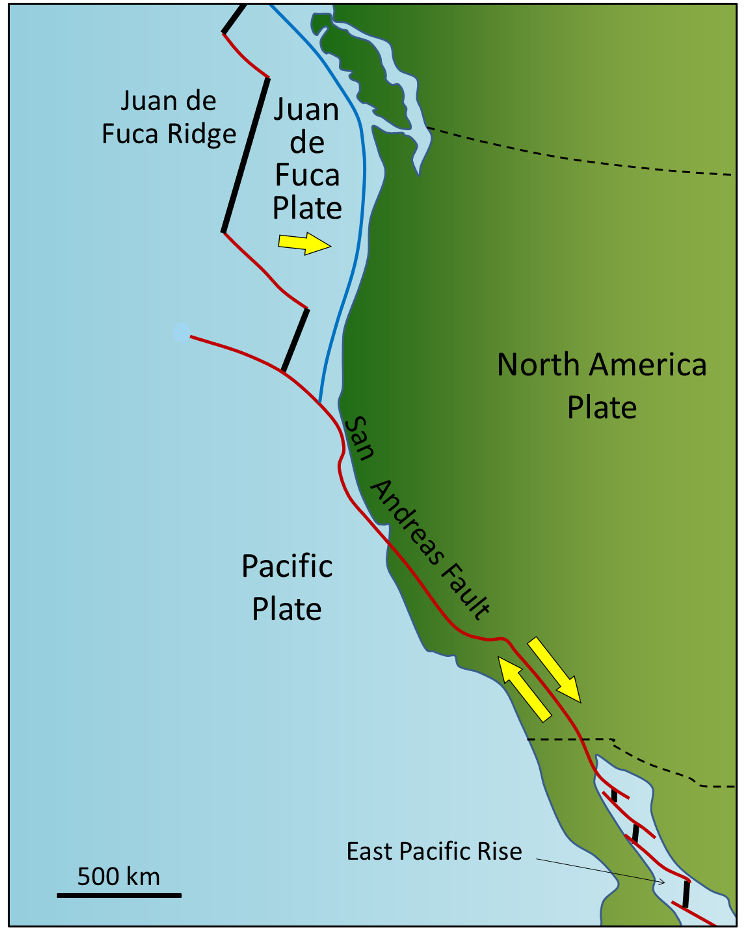4.7 Transform Plate Boundaries
Modified from "Physical Geology" by Steven Earle*
Paul Webb
Transform boundaries exist where one plate slides past another without production or destruction of crustal material. As explained in section 4.5, most transform faults connect segments of mid-ocean ridges and are thus ocean-ocean plate boundaries. Some transform faults connect continental parts of plates. An example is the San Andreas Fault, which connects the southern end of the Juan de Fuca Ridge with the northern end of the East Pacific Rise (ridge) in the Gulf of California (Figure 4.7.1). The part of California west of the San Andreas Fault and all of Baja California are on the Pacific Plate. Transform faults do not just connect divergent boundaries. For example, the Queen Charlotte Fault connects the north end of the Juan de Fuca Ridge, starting at the north end of Vancouver Island, to the Aleutian subduction zone.

As we will see in the next section, earthquakes are common along transform faults, as the two plates slide past each other.
*”Physical Geology” by Steven Earle used under a CC-BY 4.0 international license. Download this book for free at http://open.bccampus.ca
a type of fault in which two pieces of crust slide past one another (4.5)
a plate boundary at which the two plates are moving away from each other (4.5)
the sloping region along which a tectonic plate descends into the mantle beneath another plate (4.6)

